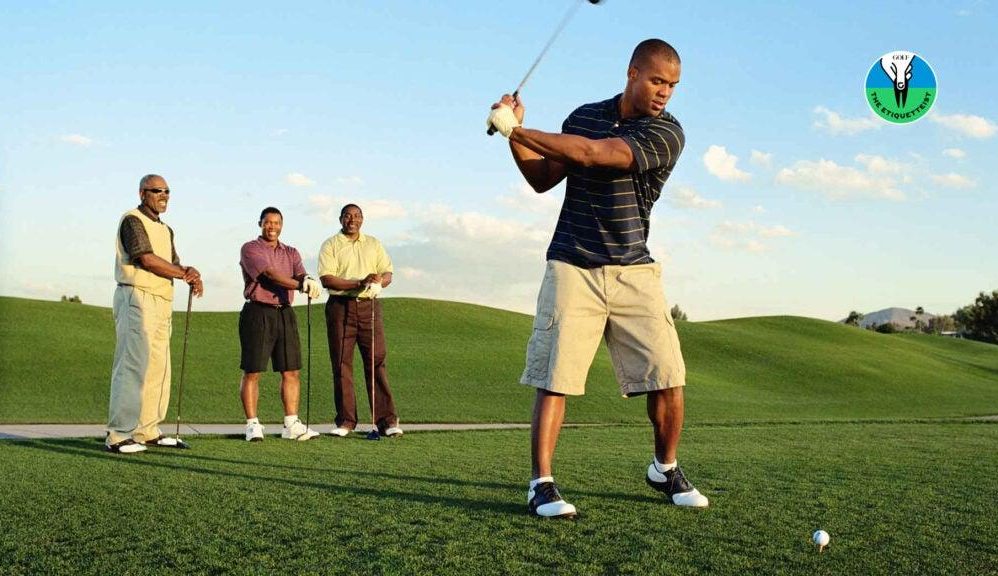The Rich Heritage of Golf: A Study of Tradition and Etiquette
Golf transcends mere sport; it embodies a legacy steeped in tradition and etiquette that has significantly influenced player behavior. From its medieval Scottish origins to its current global appeal, golf has developed a complex framework of customs that dictate how players conduct themselves both on the course and beyond. This exploration aims to illuminate the historical evolution of golf’s traditions, revealing how they shape player interactions and uphold values such as sportsmanship, integrity, and ethical decision-making.
The Origins of Golf: Unearthing Historical Influences
The roots of golf can be traced back to ancient games like “paganica,” played in Rome during the 13th century. Participants used sticks to strike leather balls into holes dug into the ground. Similar games emerged in regions like the Netherlands, Belgium, and France under names such as “kolf.” These early iterations shared fundamental principles with modern golf—hitting a ball with a club toward a designated target.
As time progressed, Scotland became the cradle for what we recognize today as golf. Its diverse terrain provided an ideal backdrop for developing this beloved game. By the 15th century, golf had firmly established itself as Scotland’s national pastime, leading to numerous courses being constructed across the country.
With growing popularity came an increasing need for standardized rules and etiquette. The Royal and Ancient Golf Club of St Andrews laid down some of these foundational rules in 1754, promoting fair play among golfers while introducing a handicap system that allowed players with varying skill levels to compete equitably.
Shaping Player Conduct: The Evolution of Rules and Etiquette
The growth trajectory of golf has been closely tied to evolving rules and etiquette that govern player conduct on the course. Initially characterized by informal play reliant on personal integrity, competitive pressures necessitated formal regulations over time.
Early organizations like the Honourable Company of Edinburgh Golfers began establishing guidelines covering aspects such as club design restrictions and penalties for breaches in etiquette. Key formats like stroke play were formalized alongside penalties for misconduct.
Etiquette evolved hand-in-hand with these regulations; respect towards opponents became paramount along with adherence to dress codes and proper behavior during play. Modern golfing standards continue refining these practices while balancing fairness against traditional customs—ensuring that integrity remains at the heart of this cherished sport.
Technological Innovations: Transforming Course Design
As technology advances rapidly, it presents new opportunities—and challenges—for designing golf courses effectively. Sophisticated software enables architects to create precise layouts featuring strategic elements tailored for optimal gameplay experiences.
Tools such as drones provide aerial views essential for visualizing hole designs while identifying potential hazards before construction begins—a significant leap forward from traditional methods! Additionally, advancements in irrigation systems enhance playing conditions throughout various seasons by optimizing water usage efficiently.
Enhancing Design Precision through Drones & Virtual Reality
Drones are revolutionizing course design by offering architects unique perspectives necessary for crafting engaging layouts while virtual reality (VR) simulations allow designers immersive experiences where they can assess playability firsthand—refining their decisions based on realistic scenarios encountered during actual gameplay!
Digital Management Systems: Elevating Turf Care Standards
Digital management systems equipped with real-time data analytics empower superintendents overseeing maintenance operations at courses nationwide! These innovations optimize resource allocation ensuring consistent turf health across all areas—from greens down through fairways—while minimizing environmental impacts associated with upkeep activities!
Governing Bodies & Standardization: Ensuring Fair Play
The establishment of governing bodies was pivotal in organizing golf into an internationally recognized sport! In the late 19th century members from organizations including United States Golf Association (USGA) sought unification among golfing practices leading directly towards creating comprehensive rulebooks outlining everything from scoring systems through tournament structures!
Collaborative efforts between regulatory entities have fostered foundational principles guiding amateur/professional tournaments alike ensuring consistency within championship parameters—all while preserving historical essence integral within this timeless game!
An Enduring Legacy: Celebrating Heritage Through Etiquette
Golf stands not merely as athletic competition but rather symbolizes heritage intertwined deeply within societal values surrounding respect/sportsmanship cultivated over centuries past! Dress codes may seem stringent yet serve vital purposes reminding participants about formality inherent throughout history fostering unity amongst players regardless background differences present today’s world!
Moreover environmental stewardship remains crucial aspect emphasized via etiquette encouraging individuals care diligently after courses left pristine condition reflecting commitment preserving natural surroundings future generations enjoy too! Through enduring traditions upheld consistently across communities worldwide—the spirit behind golfing continues thriving showcasing camaraderie/fairness central themes defining experience enjoyed countless enthusiasts everywhere alike!
In conclusion—the history surrounding this beloved pastime serves testament illustrating power tradition/etiquette shaping conduct exhibited amongst its participants—from humble beginnings rooted deep Scottish soil extending far beyond borders reaching every corner globe today—it promotes ideals centered around sportsmanship/integrity enriching lives those fortunate enough partake journey together sharing love outdoors amidst breathtaking landscapes offered up each round played out upon lush green fields stretching endlessly ahead…

Teeing Off Through Time: The Enduring Traditions and Etiquette of Golf
Meta Title
Teeing Off Through Time: Traditions & Etiquette of Golf
Meta Description
Explore the rich traditions and essential etiquette of golf. Discover how these elements enhance the game and foster respect among players.
The Origins of Golf Etiquette
Golf’s roots can be traced back to 15th-century Scotland, where players engaged in a rudimentary form of the game. As golf evolved, a structured set of rules and etiquette emerged to maintain decorum on the course. Today, understanding golf etiquette is crucial for both seasoned players and newcomers alike.
Key Historical Milestones:
- 15th Century: The first records of golf in Scotland.
- 1764: Standardization of rules at the Old Course in St. Andrews.
- 1857: Establishment of the first formal golf club, St. Andrews Golf Club.
Essential Golf Etiquette Practices
Proper golf etiquette ensures that all players enjoy the game and respect each other’s experiences. Here are some fundamental guidelines:
1. Respecting Fellow Golfers
– Be Quiet: Silence is paramount when a player is preparing to take their shot.
- Maintain Distance: Stand out of the line of sight and avoid distracting movements.
2. Pace of Play
– Keep Up: Be prepared for your turn and maintain a steady pace.
– Ready Golf: Play when ready instead of adhering strictly to tee order when safe to do so.
3. Course Maintenance
– Repair Divots: Always replace or fill in divots you make.
– Rake Bunkers: Leave bunkers smooth for the next player.
4. Dress Code
– Appropriate Attire: Follow the specific dress code of the course, which often includes collared shirts and golf shoes.
5. On the Green
– Mark Your Ball: Always mark your ball on the green to avoid interference with other players’ lines.
– Avoid Walking on Lines: Stay off the putting lines of other players to show respect.
Historical Traditions That Shape Modern Golf
Golf is steeped in rich traditions that contribute to its character. Here are some of the most notable:
The Honor System
The tradition of playing “in honor” dates back to the game’s early days. The player with the best score on the previous hole has the right to tee off first on the next. This system fosters camaraderie and respect.
Caddies and Their Significance
Caddies have been associated with golf since the game’s inception. They carry clubs, provide insight into the course, and often serve as vital companions, enhancing the overall golfing experience.
Dress and Decorum
The conventional attire of polo shirts and tailored pants reflects the sport’s heritage. Many clubs enforce specific dress codes, aiming to maintain tradition and respect for the game’s history.
Golf Etiquette Around the World
Differing customs can be observed in various golf cultures. Here are some notable etiquette practices globally:
| Country | Unique Etiquette Practices |
|——————|———————————————————–|
| Scotland | Emphasis on the “19th hole” and enjoying the clubhouse. |
| Japan | Bowing before and after a round as a sign of respect. |
| United States | Casual wear is often accepted; the pace of play is emphasized. |
Benefits of Understanding Golf Etiquette
Enhances Gameplay Experience
By following proper etiquette, players contribute to a more enjoyable round for everyone. Understanding these traditions ensures smooth interactions on the course.
Builds Lasting Relationships
Respectful interactions often lead to forming friendships among players. Etiquette acts as a social lubricant that fosters connections.
Upholds the Spirit of the Game
Playing with consideration for one’s fellow golfers reinforces the values of integrity, respect, and sportsmanship inherent in golf.
Practical Tips for Beginners
1. Learn the Rules
Familiarize yourself with basic golf rules and etiquette through resources like the USGA or local clubs.
2. Watch and Learn
Observe how experienced players behave and mimic their respectful interactions.
3. Practice Patience
Take your time to learn the customs of the game. Patience will help you blend in as you gain experience.
Case Studies: Etiquette in Action
The Masters Tournament
The tradition of the Masters emphasizes etiquette, from the ceremonial tee-off to the respectful silence during critical putts. Players often remark on the atmosphere that upholds these values, enhancing their experience.
Local Golf Clubs
Many local clubs enforce etiquette through workshops or meetings, where seasoned players guide newcomers about the significance of these traditions.
First-Hand Experience: A Golfer’s Perspective
As an amateur golfer, attending my first tournament was an eye-opening experience. The meticulous adherence to etiquette not only elevated the level of play but also created an atmosphere of mutual respect. From the sound of silence during a putt to the cheers for every good shot, the sense of community was palpable. Learning to navigate these practices has profoundly shaped my understanding and appreciation of the game.
By embracing these traditions and etiquette, golfers not only preserve the essence of the sport but also contribute to a respectful, enjoyable environment on the course. Whether you are a seasoned golfer or a newcomer, keeping these principles in mind will enhance every round you play.




